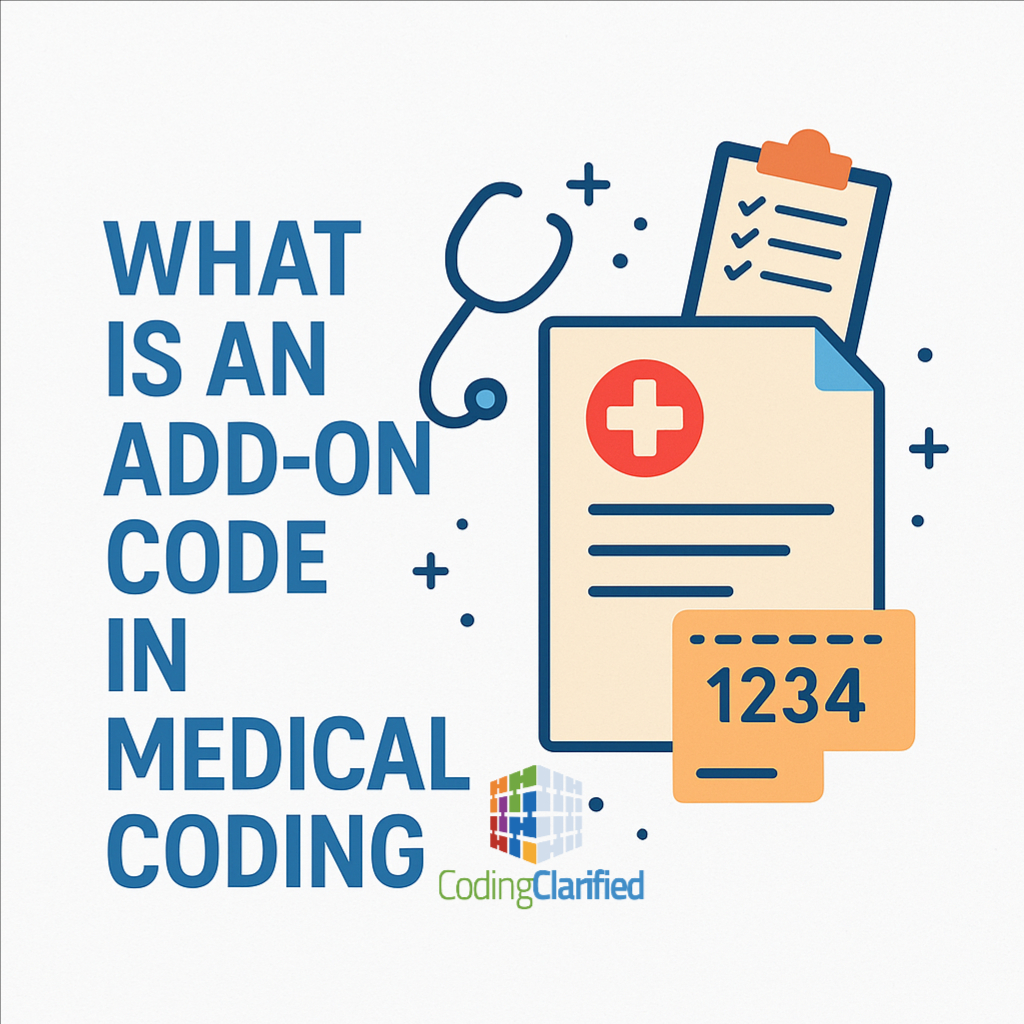What is an Add-On Code in Medical Coding? Guidelines and Tips
In medical coding, add-on codes play a crucial role in accurately reporting services that are performed in conjunction with a primary procedure. These codes ensure appropriate reimbursement and provide clear documentation of the care provided. Understanding how and when to use add-on codes is essential for any medical coder aiming for accuracy and compliance.
What is an Add-On Code?
An add-on code is a Current Procedural Terminology (CPT®) code that describes a service that is always performed in addition to a primary service. These codes are never reported alone—they are dependent on a related primary procedure code.
For example:
-
+33225 (Insertion of pacing electrode) is an add-on code that must be reported with a related base code such as 33224.
-
Add-on codes are typically indicated with a plus sign (+) in the CPT codebook.
When to Use Add-On Codes
Use an add-on code when:
-
The procedure is performed in addition to a primary procedure.
-
The CPT manual or payer guidelines explicitly state that the code is an add-on.
-
The add-on service is not typically performed independently.
Do not use an add-on code:
-
As a standalone code.
-
With unrelated or incompatible primary procedures.
How to Identify Add-On Codes
Add-on codes are clearly marked in the CPT manual:
-
They are listed with a plus (+) symbol.
-
Guidelines usually accompany the code, detailing which primary codes it may be reported with.
-
CPT parenthetical notes often include instructions like “Use +XXXX in conjunction with XXXX.”
Tips for Accurate Use of Add-On Codes
-
Always Verify Code Pairing
Confirm that the add-on code is compatible with the primary code. Use resources like CPT Assistant, payer guidelines, and parenthetical notes in the codebook. -
Avoid Modifier Misuse
Add-on codes typically do not require modifiers such as -51 (multiple procedures) because they are already exempt. -
Use Correct Units
Some add-on codes are reportable per unit or per session—pay attention to quantity indicators in the code description. -
Watch for Payer Rules
Medicare and commercial payers may have specific requirements for billing add-on codes. Check LCD/NCD policies and payer-specific edits. -
Document Clearly
Documentation should support why the add-on service was necessary in conjunction with the primary procedure.
Examples of Common Add-On Codes
| Add-On Code | Description | Must Be Used With |
|---|---|---|
| +99140 | Anesthesia complicated by emergency conditions | Anesthesia procedure codes |
| +90461 | Immunization administration with counseling | 90460 |
| +11001 | Debridement each additional 20 sq cm | 11000 |
Add-on codes are essential for representing the full scope of services rendered during a medical encounter. By using them correctly, coders help ensure accurate reimbursement, reduce denials, and uphold documentation integrity. Always refer to the latest CPT guidelines and payer policies to stay compliant.
Read the AAPC Blog here https://www.aapc.com/blog/
Read more Coding Clarified Blogs here https://codingclarified.com/medical-coding-blog/

